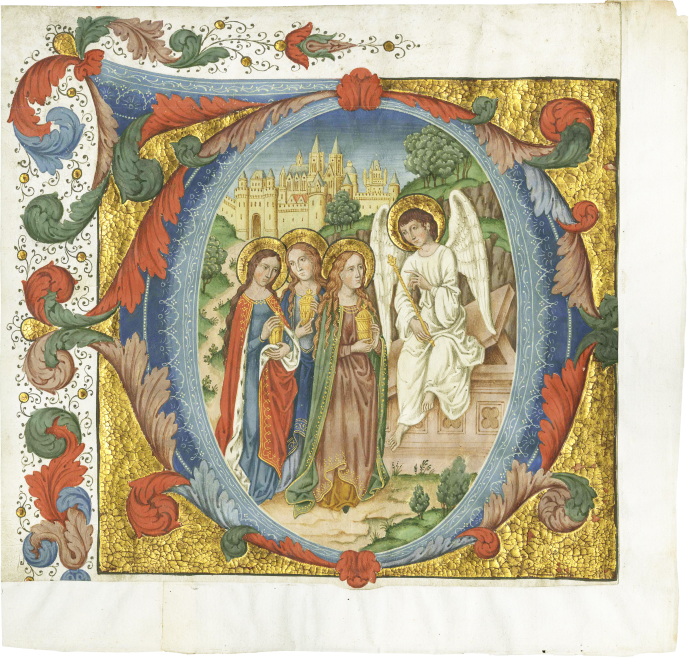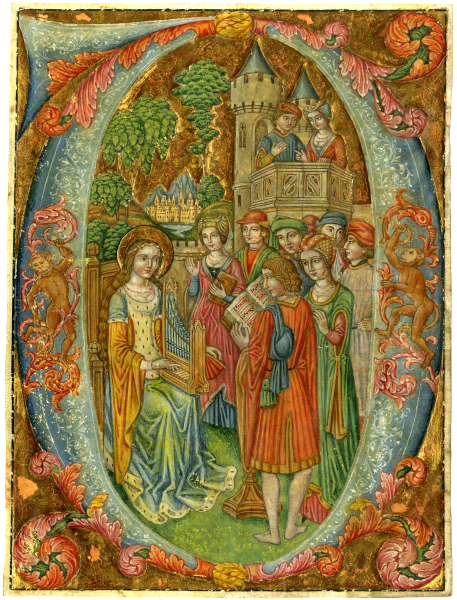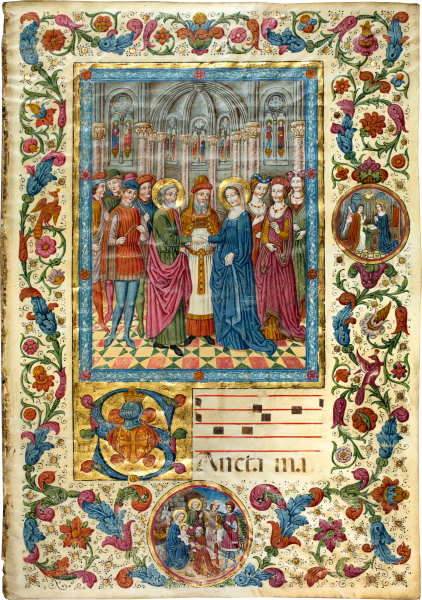The Spanish Forger The Three Marys at the Tomb



The Spanish Forger
, c. 1900 (?)The Spanish Forger
Description
This miniature typifies the work of the Spanish Forger. In a large initial "O," or perhaps "D" (note the ascender of the letter at the upper left), three women holding ointment jars and decked with haloes approach an angel seated on a tomb. Behind them appears a quite lavish fairy-tale castle. The initial itself is composed of elaborate acanthus and white-dot tracery decoration; on a burnished gold ground. The verso has 5 lines of text in black ink. The subject is not recorded in Voelkle's monograph, but the castle resembles that used in L46, The Flight into Egypt (see pl. 146).
W. Voelkle notes that the Spanish Forger must have responded to the taste of the period for initials cut from manuscripts when he painted these historiated initials. They are marginally larger than the rectangular narrative miniatures perhaps more typical of his oeuvre, but like them they utilize the same parchment stock - a dismembered fifteenth-century Italian (or Spanish) Antiphonal. It is difficult to date the miniatures by this artist, although Voelkle notes that none of the miniatures from this reused Antiphonal has a provenance that pre-dates 1925.
Unmasked in 1930 by Belle da Costa Green, then director of the Pierpont Morgan Library, the Spanish Forger is known today one of the "most skillful and successful and prolific forgers of all times." Hundreds of works are attributed to him and in 1978 a retrospective exhibition of his art was organized at the Pierpont Morgan Library in New York. He was active already in the 1890s, and he was still painting in the 1920s. He borrowed freely from chromolithographic editions published in Paris for his compositions, especially the series of publications by Lacroix, which suggests that he may been employed by one of the Parisian publishing houses (remnants of old Parisian newspapers have been found inside the frames).
The present miniature demonstrates the Forger's methods of working. Scientific analyses of his paintings disclose the presence of green copper arsenite, which was not available before 1814. Except for minor crackling of the gold (perhaps intentional) and the reinforcement of the margins with strips of paper, the miniature is in bright, fresh condition.
Literature:
The present miniature is unpublished in William Voelkle and Roger S. Wieck, The Spanish Forger, New York, Pierpont Morgan Library, 1978, but it is recorded in the ongoing inventory L185, which to date counts 255 leaves, 108 panels and 10 manuscripts.

